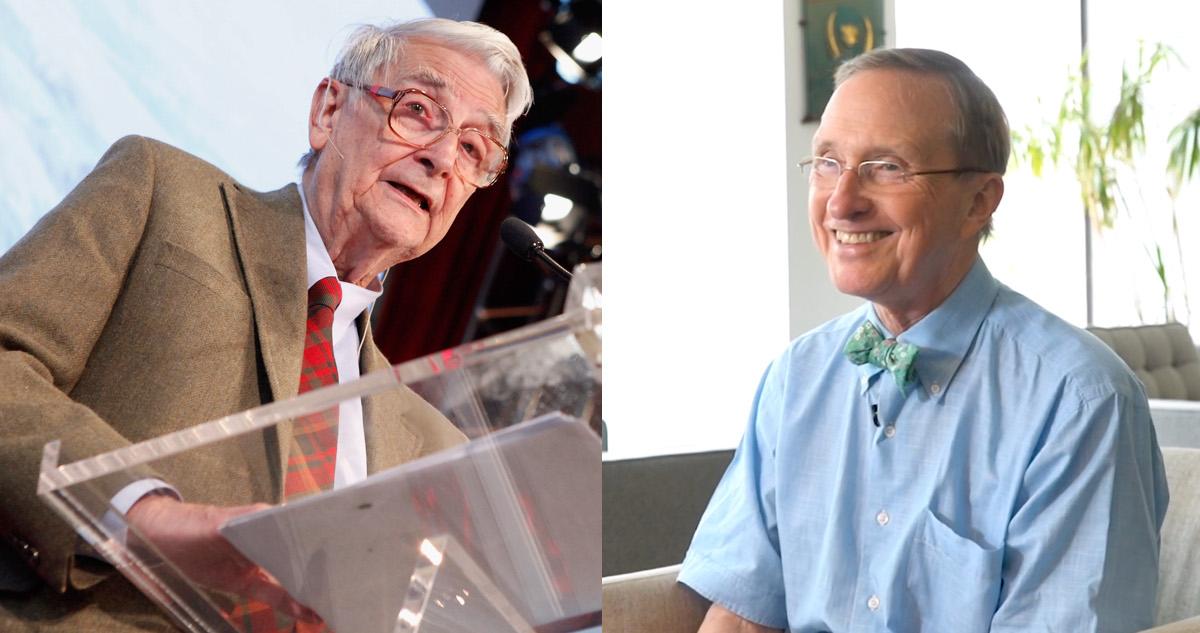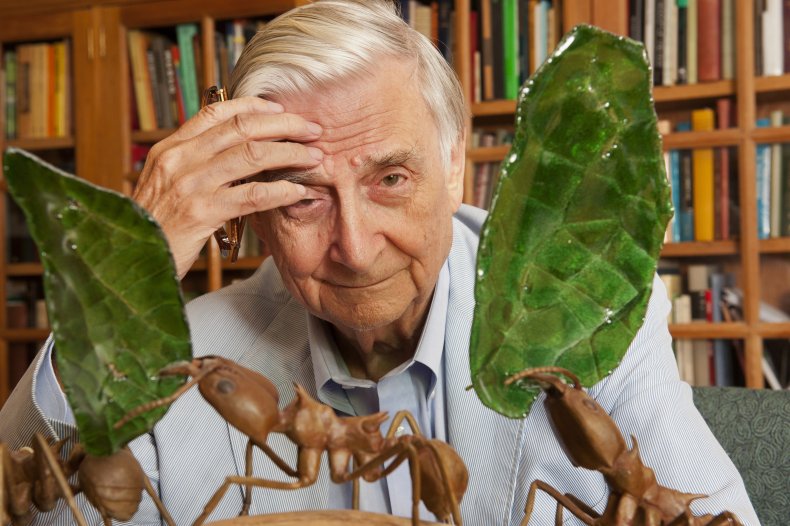
The two naturalists helped to pioneer conservation biology
and remained hopeful that humanity would make better choices.
Steve Chpapell / Facebook
(December 28, 2021) — Thoughtful Obituary in the New Yorker for Ed Wilson and Tom Lovejoy — important scientists in the saving of our planet. Both were kind enough to give blurbs for two books I wrote with Dave Brower and Jeremy Jackson
I remember a dinner with Wilson and while the rest of us were waiting for the table he sat down on the steps and pounded out a page or two on his laptop. No down-time.
He sat next to me at dinner, and he was boyishly excited to talk about great white sharks. He’d loved Blue Meridian, the book and movie, by Peter Matthiessen.
Honoring the Legacy of E. O. Wilson and Tom Lovejoy
The two naturalists helped to pioneer the field of conservation biology and remained determinedly hopeful that humanity would make better choices.
Steve Chappell is the author of Outlaws in Babylon and Don’t Mind Dying. He has also co-authored several books including Let the Mountains Talk. Let the Rivers Run: A Call to Those Who Would Save the Earth (with Dave Brower) and Breakpoint: Reckoning with America’s Environmental Crisis (with Jeremy Jackson).
Honoring the Legacy of E. O. Wilson and Tom Lovejoy

E. O. Wilson contemplated — and revealed — the world of ants.
Elizabeth Kolbert / The New Yorker
(December 28, 2021) — Over the weekend, two of the country’s leading naturalists, E. O. Wilson and Tom Lovejoy, died a day apart. Wilson, who was perhaps best known for his work on ants, was a pioneer in the field of conservation biology; Lovejoy was one of the founders of the field. The two men were friends — part of an informal network that Wilson jokingly referred to as the “rain-forest mafia” — and there was something eerie about their nearly synchronous passing.
“I’m trying very hard not to imagine a greater planetary message in the loss of these biodiversity pioneers right now,” Joel Clement, a senior fellow at the Harvard Kennedy School’s Belfer Center for Science and International Affairs, tweeted on Monday.
The two scientists first met in the mid-nineteen-seventies. At that point, Wilson was in his mid-forties, and teaching biology at Harvard. Lovejoy, a dozen years younger, was working for the World Wildlife Fund. Over lunch, they got to talking about where the WWF should focus its efforts. They agreed that it should be in the tropics, because the tropics are where most species actually live.
There wasn’t a good term for what they were trying to preserve, so they tossed one around — “biological diversity” — and put it into circulation. “People just started using it,” Lovejoy recalled, in an interview in 2015. (Later, the phrase would be shortened to “biodiversity.”)
In the seventies, Wilson and Lovejoy were both already deeply concerned about what was happening to the tropics. Increasingly, rain forests were being felled to make room for roads, farms, and logging operations. A decade earlier, Wilson, together with a Princeton professor named Robert H. MacArthur, had published a slim volume called “The Theory of Island Biogeography.”
Though the book concerned actual islands, surrounded by water, its implications seemed to extend to isolated habitats, surrounded by human development. According to Wilson and MacArthur’s theory, the smaller these “islands,” the fewer species they would retain.

Tom Lovejoy spent much of his life trying to preserve the Amazon rainforest.
The volume was published while Lovejoy was doing Ph.D. work on birds in the Amazon. Around the time that he and Wilson first met, he came up with an idea about how to test the theory. The Brazilian government was encouraging people to settle north of Manaus. The government would pay for ranchers to move to the area, cut down the rain forest, and start raising cattle. At the same time, it required that ranchers leave half of the forest on their land intact.
Lovejoy proposed that the ranchers coöperate with scientists to create different-sized patches of rain forest that could then be studied. The experiment became known as the Biological Dynamics of Forest Fragments Project, or the BDFFP, and it continues to this day. It has shown that small fragments of forests lose species, and then just keep on losing them.
Lovejoy spent most of the past forty years trying to preserve the Amazon. He took anyone he thought could help with this effort to visit the BDFFP, including several American politicians and also Tom Cruise. (When I visited the BDFFP, in 2012, Lovejoy told me that Cruise had seemed to enjoy himself on the trip but had never seriously taken up the cause.)
In his writings, Wilson, too, campaigned for the preservation of the Amazon, and of tropical forests in general. In one of his last books, “Half-Earth: Our Planet’s Fight for Life,” he called for setting aside half of the world’s surface as untouchable. “The only hope for the species still living is a human effort commensurate with the magnitude of the problem,” he wrote.
David Attenborough on Spiders with Personalities
By most objective measures, it is discouraging to work in conservation biology these days. Human impacts on the planet continue to grow, and, as they do, the space available for other species continues to shrink. In the Amazon, deforestation rates started to slow around 2010, but in recent years they have been ticking up again.
In 2019, Lovejoy and a Brazilian scientist, Carlos Nobre, warned that the region was nearing a critical threshold. The Amazon rain forest is so huge that it creates its own weather patterns. If deforestation continued, the pair cautioned, then the rains that made it a rain forest would eventually stop falling. “The precious Amazon is teetering on the edge of functional destruction and, with it, so are we,” they wrote.
Despite it all, though, Lovejoy and Wilson remained determinedly hopeful. There was still time to save, if not the entire Amazon, then most of it; if not every species, then the great majority. Lovejoy liked to say that optimism was “the only option.” He advocated a vast program of reforestation on lands like those around the BDFFP, which ranchers abandoned after a few decades.
“I believe we will choose wisely,” Wilson wrote toward the end of “The Future of Life,” published in 2002. The only way to really honor his and Lovejoy’s legacy would be to prove him right.
Elizabeth Kolbert, a staff writer at The New Yorker since 1999, won the 2015 Pulitzer Prize for “The Sixth Extinction.” Her latest book is “Under a White Sky: The Nature of the Future.”
Posted in accordance with Title 17, Section 107, US Code, for noncommercial, educational purposes.